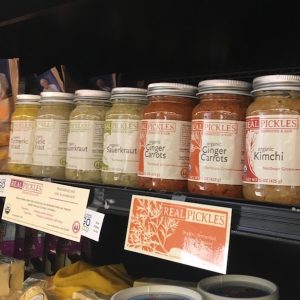
Back when I was just starting to volunteer at my local co-op, I made a short video showcasing locally-sourced products in the store. These ranged from the affordable to the higher end of the price scale. Naively, I shot the images showing some shelf tags with prices on them.
“Please don’t put the prices right in the foreground,” I was told. “Everyone always thinks we’re so expensive, and we don’t want to reinforce that.”
I re-shot the footage. But being an educator, I also saw this as a teachable moment.
Food prices connect to lots of complicated questions (Are cheap foods necessarily less nutritious? How do widening income and wealth disparities affect assumptions about what food should cost? How do time and money affect each other when we’re thinking about food prices?) But the main point is actually pretty simple: our sense of the cost/price/value relationship for food has been fundamentally shaped by a century of cheapness and convenience in our food system, brought about by industrial overproduction, corporate consolidation, low wages, financial speculation, and more.
To my educator’s way of thinking, more people need to grapple directly with all of that. Our food is spectacularly cheap – on average, Americans now spend less than 10% of our income on food, a smaller percentage than any other nation. And for every dollar we spend on food, farmers get a smaller and smaller slice – less than eight cents in 2017. It goes a long way to explaining the crisis in farm income as well as the struggles of small retail businesses like ours.
I still think there’s a teachable moment here. But over the past couple of years of being more actively involved in our co-op’s leadership I’ve gradually gotten to accept that that this discussion needs to be moved to the classroom or the boardroom or into the background of our encounters with customers and members. It won’t work to lead with it as a marketing strategy. Even in the cases where our prices are actually lower, it doesn’t work in our favor.
Supermarket prices control that discussion now. They just do. And I’ve come to recognize the wisdom in the strategy of “self-protection, secession, and succession” advocated by the authors of a much-cited essay from the 1990s.
What they meant was that in order to create something that could possibly stand as an alternative to the corporatized juggernaut of the industrial food system with its convenience, abundance, and cheapness, we need to carve out more or less autonomous spaces where we can start to rebuild smaller-scaled, more reciprocal and accountable kinds of exchange (i.e. to “secede” from the dominant system). We need to do this in lots of small steps that slowly, almost stealthily, move more of our food decisions and behaviors into the new structures we’re building (that’s “succession”).
And we need to defend those spaces against the many things that challenge and undermine them, which includes the danger of getting trapped in the language and assumptions of the system that we’re trying to create an alternative to.
So I’m going to take this task of talking about food and price back to my classroom in the fall and try to get better at explaining it. But at the store, I’m going to jump into the marketing plan our board is moving toward after last week’s planning retreat, which focuses on emphasizing the many things we can do rather than trying to explain away the things we can’t (like compete with supermarket prices). I’m still happy to engage anyone in a discussion of price, but I’m not going to volunteer it as a talking point. There’s just too much other important work to do.